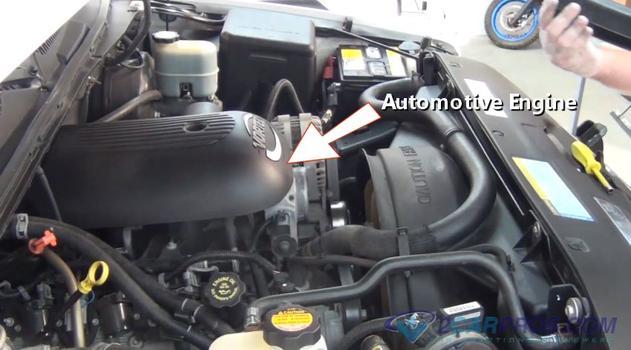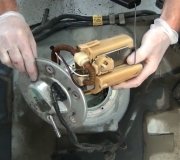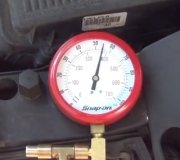We're going to need to connect a fuel pressure gauge to the test port on the fuel rail to see what's happening. An injector can't leak that fast. At a minimum, it will take a couple of minutes to bleed the pressure down to 0 psi.
I was involved with two vehicles that did lose fuel pressure almost instantly. One was on a brand new Intrepid on the showroom floor. It turned out to have a cut o-ring around the nozzle on the fuel pressure regulator, right from the factory that way. Ten cent part solved the problem. The second one was on a customer's Dynasty that was in for an oil change. I popped the regulator out and found a similar cut o-ring. With that knowledge, I was confident in my diagnosis, but the owner declined the repair. I guess he enjoyed the long crank time.
We can figure out if we're on the right track by watching how the pressure gauge reacts. If it starts out at 0 psi, jumps up to, . . . oh, . . . say 10 - 20 psi when you turn on the ignition switch, then falls right back down to 0 psi, try that again after using a hose pinch-off pliers to pinch the fuel return line. That's the smaller of the two fuel lines. If the regulator or its o-ring are leaking, pressure will hold once that return line is blocked.
If fuel pressure jumps up from 0 psi, then stays there for a good 20 - 30 seconds, turn the ignition switch back off, then to "run" a second time. Fuel pressure should pulse up higher, then stay there. It is possible that by turning the ignition switch to "run" just once, that may not be enough time to get the pressure high enough for the fuel to atomize out of the injectors.
One thing to be aware of is starting with the redesigned '96 models, the starter relay is controlled by the Engine Computer, and that will only allow operation of that relay three times. After that, it assumes the engine should be running, so it will not allow the starter relay to turn on for the fourth attempt. If you try to cycle the ignition switch too many times, it will stop working until you wait a little while.
If you find fuel pressure either has been holding at around 45 psi or higher, or it jumps there as soon as you turn on the ignition switch, the failure to run is not fuel pressure-related. For that we'll need a scanner to look at other things. Without a scanner, you can start the diagnosis by monitoring the automatic shutdown, (ASD) relay. An easy way to do that is to connect a test light to any wire in that circuit. You can use a voltmeter too, but most digital meters don't respond fast enough. Test lights can also be seen from inside the vehicle. Look for the wire that is the same color at every injector, and the ignition coil pack. That's usually a dark green / orange wire. You can also use either of the two smaller terminals on the back of the alternator. You will see the test light turn on for one second when you turn on the ignition switch, then it will turn back off. What's important is it must turn back on when the engine is rotating, (cranking or running). If it doesn't turn back on right away when you start cranking the engine, we'll need to look at the crankshaft position sensor and the camshaft position sensor. It's the signals from those two sensors that tell the computer it's time to turn on the ASD relay. That's also when the fuel pump will be running.
For the benefit of others researching this problem, if you need help using a test light, check out this article:
https://www.2carpros.com/articles/how-to-use-a-test-light-circuit-tester
Tuesday, June 9th, 2020 AT 7:07 PM




